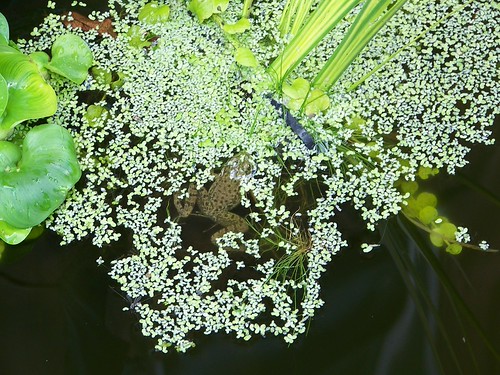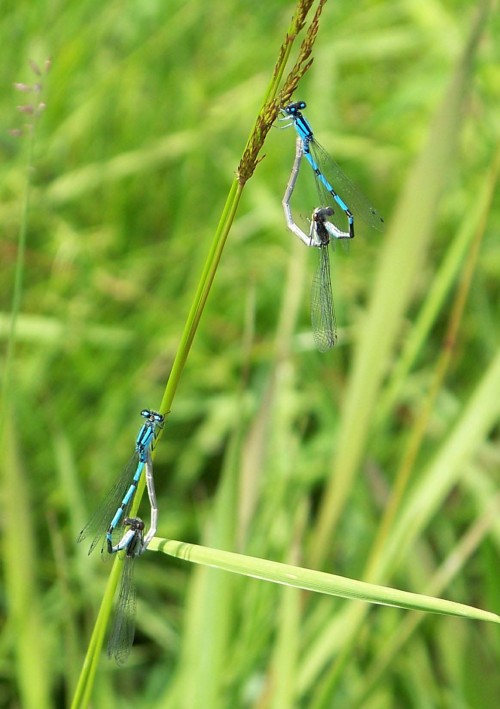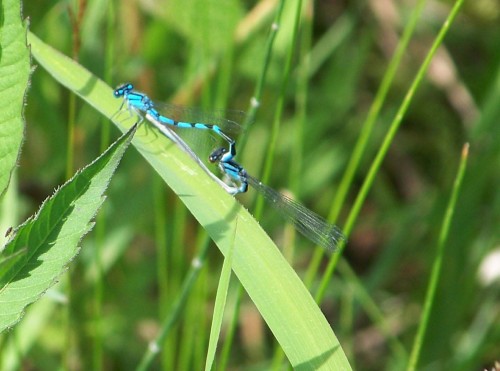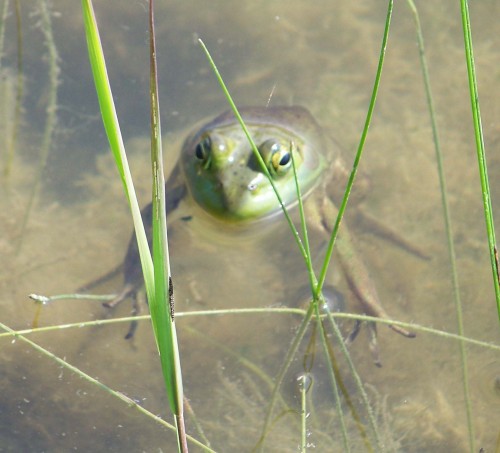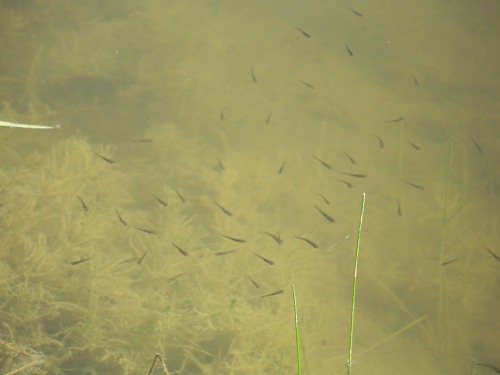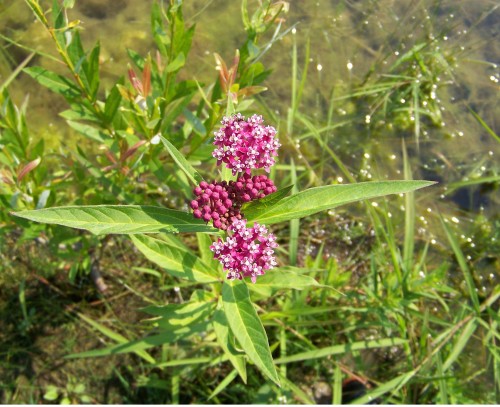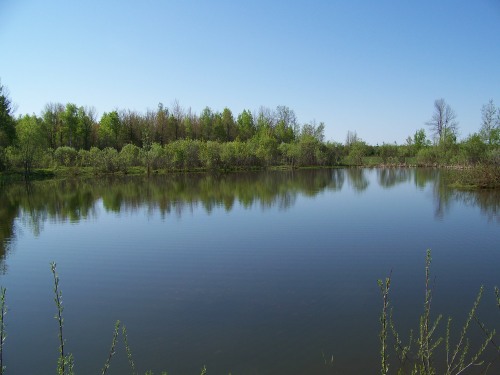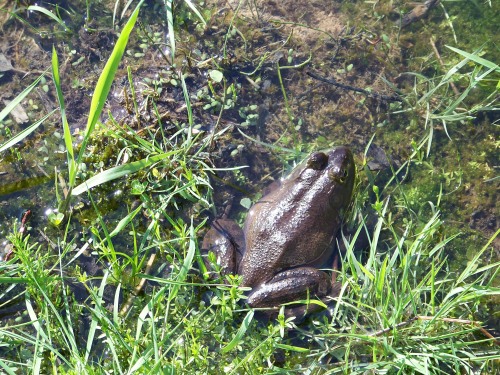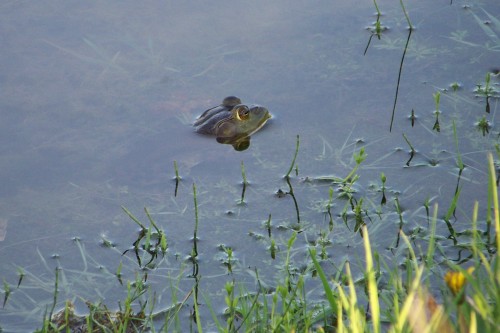
By August, our small, decorative garden pond is looking lush. I purchased a single water hyacinth and one lone water lettuce plant in the spring, and by now these prolific multipliers have covered the surface of the pond. They provide good cover for the frogs that take up residence in the pond for the summer months.

The pond attracts young Bullfrogs (Rana catesbeiana) and Green frogs (Rana clamitans melanota). With a casual glance, it is easy to miss the well-disguised pond residents, but a more lingering examination of the water surface will usually reveal a few amphibians warily watching the watcher.

Green frogs and Bullfrogs are similar, but the green on the Bullfrog’s face is broader and shades into his body colour, while the bright green on the Green Frog’s face more closely resembles a moustache. Also, you can easily see the distinctive line formed by the dorsolateral fold running along the upper side of the Green Frog.

The frogs can be spotted sitting on the log that is partly submerged in the pond, or seated on the rocks encircling the edge of the pond. Smaller frogs rest on the water lettuce leaves.

Others are camouflaged floating amongst the leaves.

Hey! That’s not a frog, that’s a toad! An American Toad, Bufo americanus, to be more precise.

Though I often come across toads in the garden, it is unusual to see one by the pond. This fellow has obviously been swimming. Perhaps the drought we have been experiencing has made him seek out moisture.
Here’s another visitor doing some frogspotting. He has frog legs in mind for dinner.



